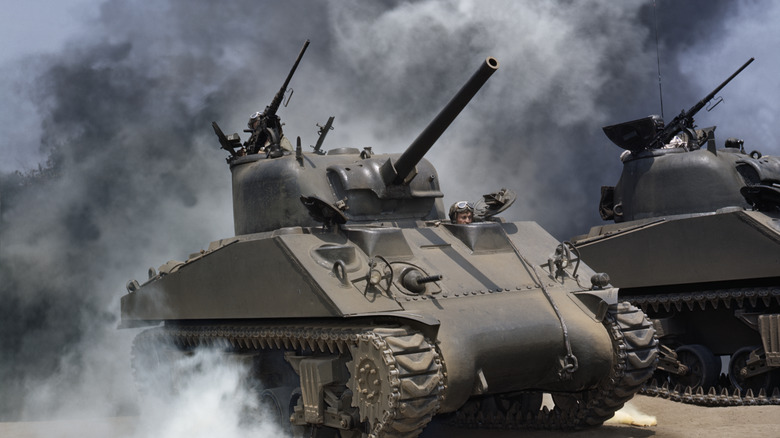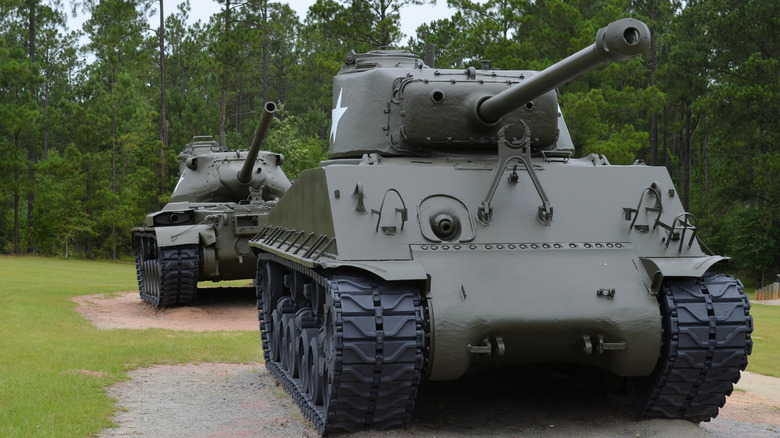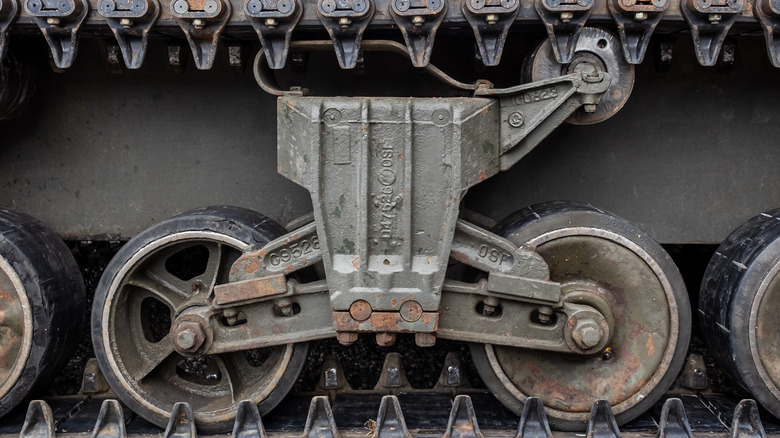Why The M4 Sherman Dominated The Battlefield Long After WW2
Aside from the sheer scale of the devastation it wrought, World War II changed the face of the planet in countless ways. Geographically. Socially. Technologically. The countries involved engineered monstrous weapons from the atomic bomb to increasingly sophisticated models of tank.
During the war, a wide range of tracked vehicles were developed. Some, like the formidable Tiger 231, absorbed tremendous punishment and were behemoths. Defensive potential has a tendency to diminish over time as ever-more-powerful shells and artillery are developed, however. The thing that has set timeless tanks like the iconic M4 Sherman apart, though, has been the strong faith, and even stronger materials, that its creators have put into them since their introduction.
In some aspects, the Sherman that was deployed in World War II was a rather different beast to the one that would serve in conflicts to come. Sherman features and capacities would be subject to several revisions and upgrades, but, at its core, it would remain the same successful tank that the Allies used to great effect during the conflict. Here's how the Sherman was introduced and how it fared during World War II, as well as a look at its story afterwards.
The introduction of the M4 Sherman and its role in World War II
The United States officially joined the Allies in World War II in December of 1940. When it did so, it brought a completely new level of military might into play. Then, 1942 saw the nation develop the M4 Sherman tank. It was a medium tank, a step above the M3 Lee (and its British-made variant, the Grant), which was used earlier in the conflict. However, as historian David Fletcher puts it in an episode of The Tank Museum's Tank Chats: "... once the Sherman came along, it eclipsed them completely ... they were pretty well abandoned at that time."
The U.S. military at the time intended the tanks to focus on infantry support, rather than providing the defenses and offenses that would be required for the rigors of protracted armored combat, however. As a result, it wasn't always an effective match for the likes of the Panther and Tiger tanks it faced. Its key advantage, though, was the fact that it boasted a low-maintenance and relatively easy-to-fix design like its predecessor (Fletcher went on to say of the M3 Grant, "... it would always start in the morning, it would go all day").
The ability to keep a massive fleet in the field, so often key during WWII, allowed the model to distinguish itself. Around 50,000 Shermans were built up to 1945, making it America's most-used tank model.
The M4 Sherman after World War II
The sheer quantity in which Shermans were produced represented significant opportunities, even after the war was over. The convenience of mass-production, balanced with its versatility, made it rather easy to adapt and improve upon the base model. Said model was solid as-is, though, boasting sophisticated systems to aid accuracy while driving and a trio of Browning machine guns to complement its 75mm gun.
Subsequent models added further boons, such as the M4A3E9's enhanced armor, and a GM 12-cylinder or Ordnance Engine nine-cylinder diesel engine was utilized in a few rare models. This made the M4 rather safer to drive, as the majority of models were gas-powered and could easily catch fire as a result.
Different variations could be attuned to a variety of battlefield tasks (there was an M4 tailored to the vital task of clearing minefields for instance). It remained accessible for some time, and so it stayed in use well beyond its original conflict. The five-crew M4A3E8 served in the US army during the Korean War, again performing against better-armed foes.
Chrysler began building the M4's replacement, the M48 Patton main battle tank, in 1952, but the legendary Sherman was so prolific that over 50 countries used them for decades beyond.


